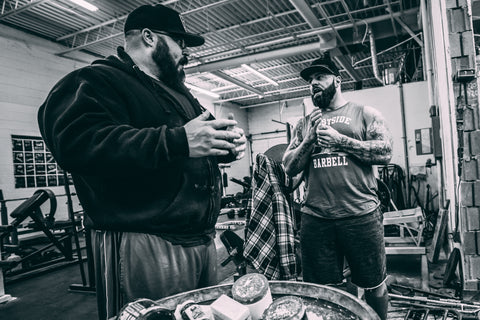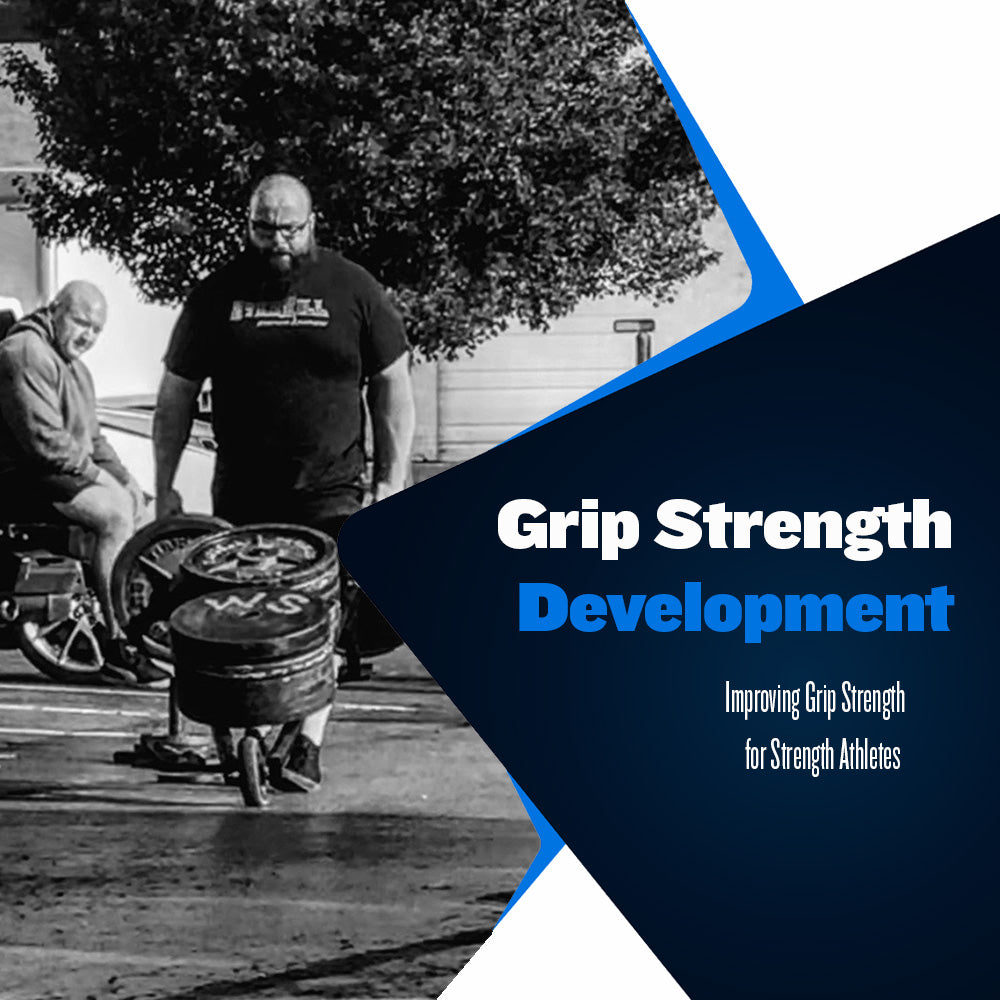Grip Strength Development for Strength Athletes

It doesn't matter if you are a powerlifter, weightlifter, or strongman competitor, the ability to exert a powerful grip is a tremendous benefit. Developing the forearms and improving grip strength allows athletes to deadlift, press, and carry more weight for extended amounts of time.
As a powerlifter, gripping the bar as firmly as possible will improve your deadlift strength and allow you to exert more force and control in the bench press. A weightlifter who possesses a strong grip will be able to create more tension and speed during the initial pulls from the floor. For the strongman, utilizing grip strength exercises leads to heavier deadlifts, improved pressing power, and the grip endurance needed to succeed in farmer's carry and loading events.
There's no doubt that building powerful grip strength is something that should be prioritized when it comes to strength sports. At Westside, we have long understood the importance of grip strength, with many of our lifters pulling over 800lbs.
Here are a few exercises we use to accelerate an athlete's grip strength development:
Barbell vs. Quad Band Holds
This exercise is a common grip exercise for our strength athletes. Holding a loaded barbell with heavy bands attached for time is a surefire way to improve your grip strength quickly.
To set this exercise up, you will need a squat rack, a barbell, and two monster mini bands.
First, you will set the barbell height directly above the knee, similar to a high rack pull. Once the barbell is set, you will want to fold the monster minibands to "quad" them. We use this term because the way the bands are folded provides double the band tension on each side, which applies tension similar to that of four monster mini bands.
To perform this exercise, you will begin with just the barbell versus bands. You will pull the bar to complete lockout, then hold. For lighter reps, hold for 20-30 seconds each. As the weight begins to challenge you (what feels like 70%), begin holding the barbell for 10 seconds each hold.
The intention is to perform 10-second holds for each set, loading 10-20lbs more after each set is completed. Take 1-2 minutes rest between sets. You will work up until you fail to hold the weight loaded for at least 10 seconds.
As always, the goal is to beat your previous PR.
Double Overhand Axle Shrugs
This exercise kills two birds with one stone. Using a double overhand grip while shrugging an axle bar will tax the forearms and lead to more significant grip strength development. Additionally, this exercise will also help build the upper back and traps.
This exercise is very simple to set up; you need an axle bar and a squat rack. Like the previous exercise, you will set the barbell to a height just above the knee. You will load the barbell and perform multiple sets and reps utilizing a double overhand grip on the barbell.
I recommend performing four to six sets of ten to fifteen reps to get started. As far as bar weight goes, you should load up the heaviest amount of weight possible while still completing all prescribed sets and reps with good form.
As with the previous exercise, the goal is to always end with a heavier weight than you did the last time you performed the exercise.
Plate Pinches
This is one of the old-school grip strength exercises that offers excellent yields in strength and requires nothing else than some plate weight. Plate pinches are a great way to develop grip strength and forearm size when you have limited access to specialty barbells, bands, or grip-specific machines.
This exercise is performed as the name implies; you will hold plate weight in your hands using a pinch grip. Beginners may need to begin with 25lb plates. However, most will be able to start using 45lb plates. Start by doing holds for time; 60 seconds of holding a taxing amount of weight will challenge you.
You can increase the weight and time as grip strength develops. It is recommended that you aim to increase the difficulty of the exercise as you progress.
This can be accomplished by pinching two plates together in each hand with the smooth side facing outward, or you can hold thicker plates like bumper plates or 100lb plates if your grip strength allows it.
No Weak Links
It is easy to focus on the big picture and large muscle groups when building strength. Athletes often neglect the details that can make a significant impact on your lifts. One of those commonly overlooked details is grip strength.
Many people assume that you're training your grip as long as you aren't using straps. While this is true to a degree, if you want to build a grip powerful enough to crush the hands of your enemy, you must include grip-specific exercises into your programming.
Don't make the mistake of thinking the grip strength you possess daily in the gym will always be there. You not only want to develop grip strength, but you also need grip endurance.
After a long day at a meet, excessive grip strength and endurance will guarantee no failed deadlifts due to limited grip strength development.
The grip strength exercises listed above will address any issues with grip strength or endurance. Start throwing a few of them in at the end of your lower or upper body accessory training and reap the benefits of improved grip strength development.
Sources:
Simmons, L. (2007). Westside Barbell Book of Methods. Westside Barbell.
Verkhoshansky, Y., & Siff, M. C. (2009). Supertraining. Verkhoshansky.





